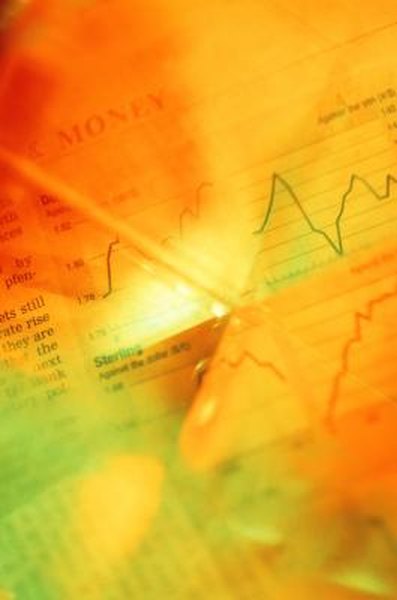How Does Light Volume Affect the Stock Market?
Light market volume is an indicator of market change.
John Foxx/Stockbyte/Getty Images
Traders always watch volume of specific stocks and of the market as a whole. Technical analysts are particularly concerned with volume because it is a gauge of market sentiment. They study the volume of advancing issues against that of declining issues. When investors are bullish, volume is high in advancing issues. When the market is crashing, volume is high in declining issues. However, when the market is running out of steam, a change of direction is possible.
Volume
The total number of shares traded on a specific stock exchange, such as the New York Stock Exchange or NASDAQ, during a specific period of time is known as volume. Market liquidity rises as more people transact business, which is reflected in higher volume. Low volume generally means the market is less liquid. A more liquid market means lower volatility because the prices of stocks don't change as much when there is ample stock available on both the buy and sell sides.
Light Volume
There are two kinds of light volume, the anticipated kind and the kind that indicates a possible change of direction in the market. Anticipated light volume happens around holidays. However, if it occurs away from a holiday, it is a sign that participants are staying out of the market for a reason. In a bull market, low volume can indicate traders are concerned about a top in the market, to be followed by a correction. If the market has been dropping, a lack of short-selling interest can produce low volume if traders think the market has reached support and that a short-covering rally is about to start.
Liquidity
Light volume can be used for a tactical trading strategy. It is possible for a large institutional investment fund to influence market direction during a low-volume day by trading large blocks of stock. Low volume means there are fewer shares trading, and fewer shares means less liquidity across the broad market. Stock price volatility rises in a low volume market. Trading huge blocks of stock in an illiquid market can cause significant changes in the prices of those stocks. If the stocks traded are among certain market-leading large cap stock issues, the changes in those issue prices can affect the performance of the indexes -- either up or down depending on whether there is buying or selling.
Interpretation
If the market is up strongly on high volume, the big hedge funds and mutual funds are probably in the market, buying. This is considered an indicator that the pros expect a long-term bullish trend. When volume declines again, they are finished with their market move and are waiting for smaller investors to come in. After a strong-volume upward move, if the market moves sideways in conjunction with lower volume for several days in a row, it is a bullish sign indicating that all overhanging selling pressure has been relieved and any buying could spark a strong price rise.
References
Writer Bio
Victoria Duff specializes in entrepreneurial subjects, drawing on her experience as an acclaimed start-up facilitator, venture catalyst and investor relations manager. Since 1995 she has written many articles for e-zines and was a regular columnist for "Digital Coast Reporter" and "Developments Magazine." She holds a Bachelor of Arts in public administration from the University of California at Berkeley.

